Drug discovery collaboration between Japanese pharma and a UK SME CRO successfully developed novel small molecule inhibitors of the Kv1.3 channel to treat autoimmune disease
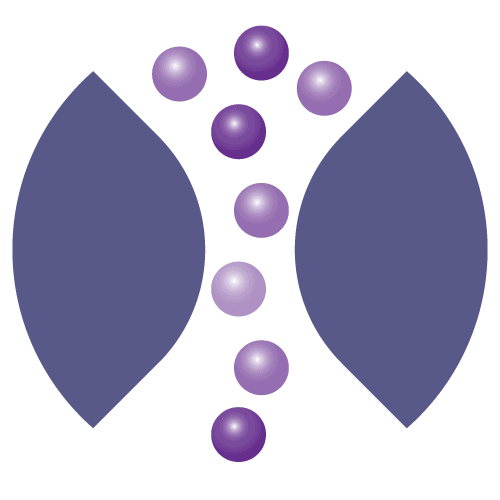
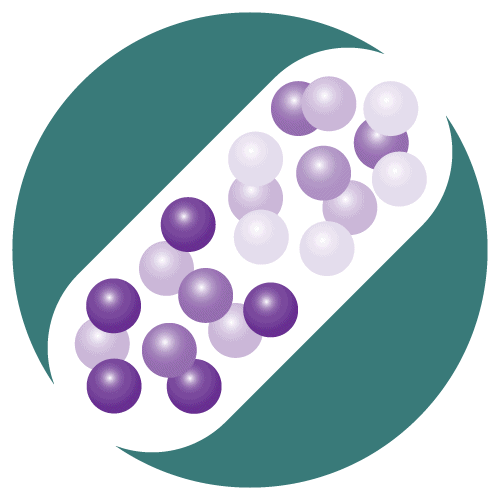
Case Study
Case Study title
Drug discovery collaboration between Japanese pharma and a UK SME CRO successfully developed novel small molecule inhibitors of the Kv1.3 channel to treat autoimmune disease
Authors
Robert W. Kirby, Raymond Tang, Louise Webdale and Marc Rogers
- Metrion Biosciences Ltd, Riverside 3; Suite 1, Granta Park, Cambridge, CB21 6AD, United Kingdom
Introduction
Ion channels represent 15 – 20% of historic drug approvals and recent drug discovery projects. Many ion channel families (Nav, Cav, TRPx and GABA) are validated as therapeutic targets based on human genetics, animal models and selective pharmacology. However, ion channels are challenging targets requiring specialist target class knowledge and screening technology such as automated patch clamp (APC) electrophysiology.
Here we outline our example where a pharma company interested in ion channels, but lacking expertise and screening platforms turned to a specialist CRO to fill this knowledge gap. In our case a Japanese pharma company with plate-based assay data wanted to expand medicinal chemistry SAR by accessing high quality APC and ion channel expertise.
During the collaboration selective Kv1.3 modulators with nM potency and efficacy against human T-cells were identified.
Collaboration structure and management
Screening cascade and partner contributions.
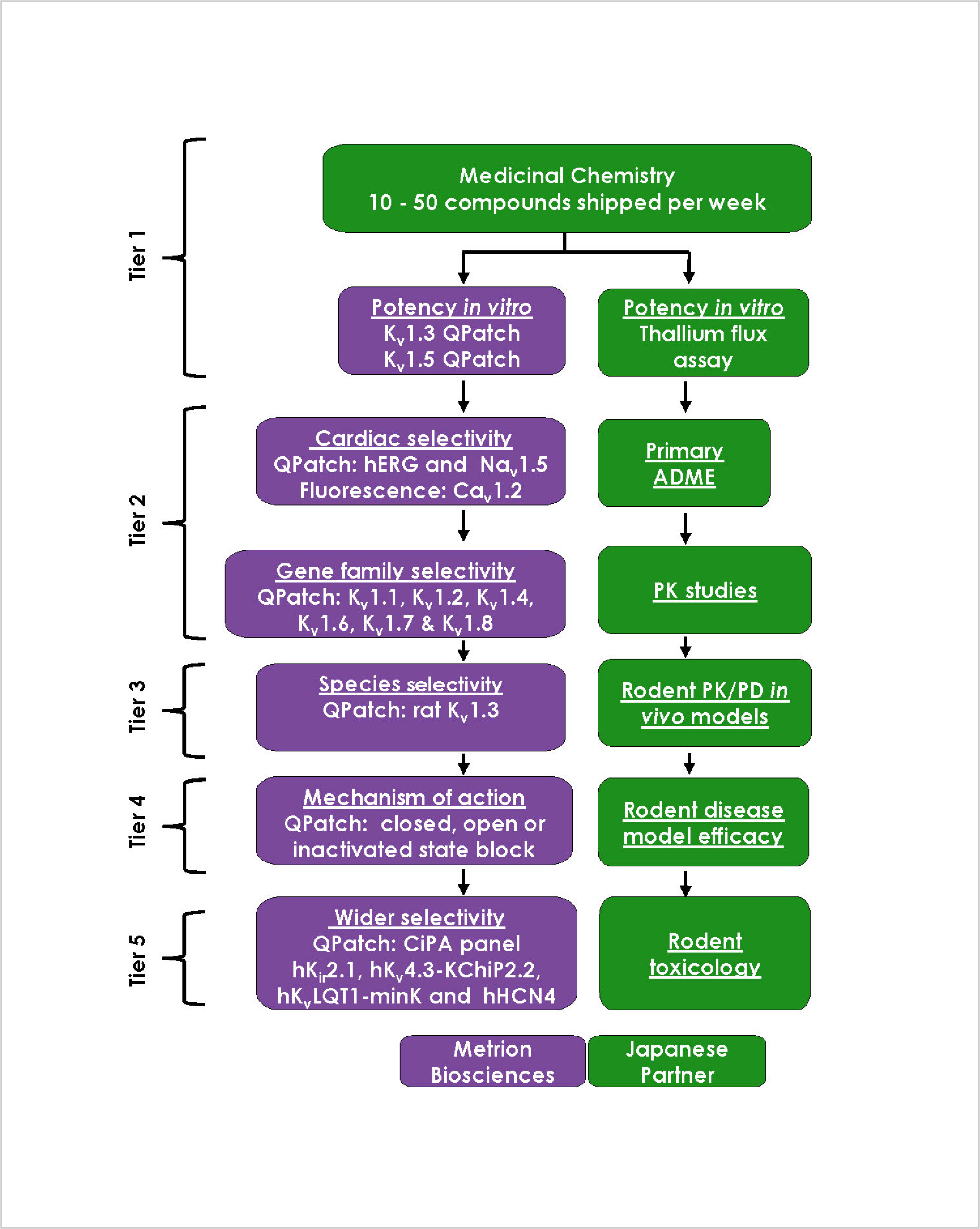
The Japanese pharma partner provided the medicinal chemistry SAR which supplied compounds into a 5 tier screening cascade.
Metrion contributed: APC assays using the QPatch system for all tiers. The first tier the primary assessment of potency against hKv1.3 and a gene family member, hKv1.5.
Japanese partner contributed: ADME, PK, ex- and in vivo efficacy and toxicology studies.
Collaboration management
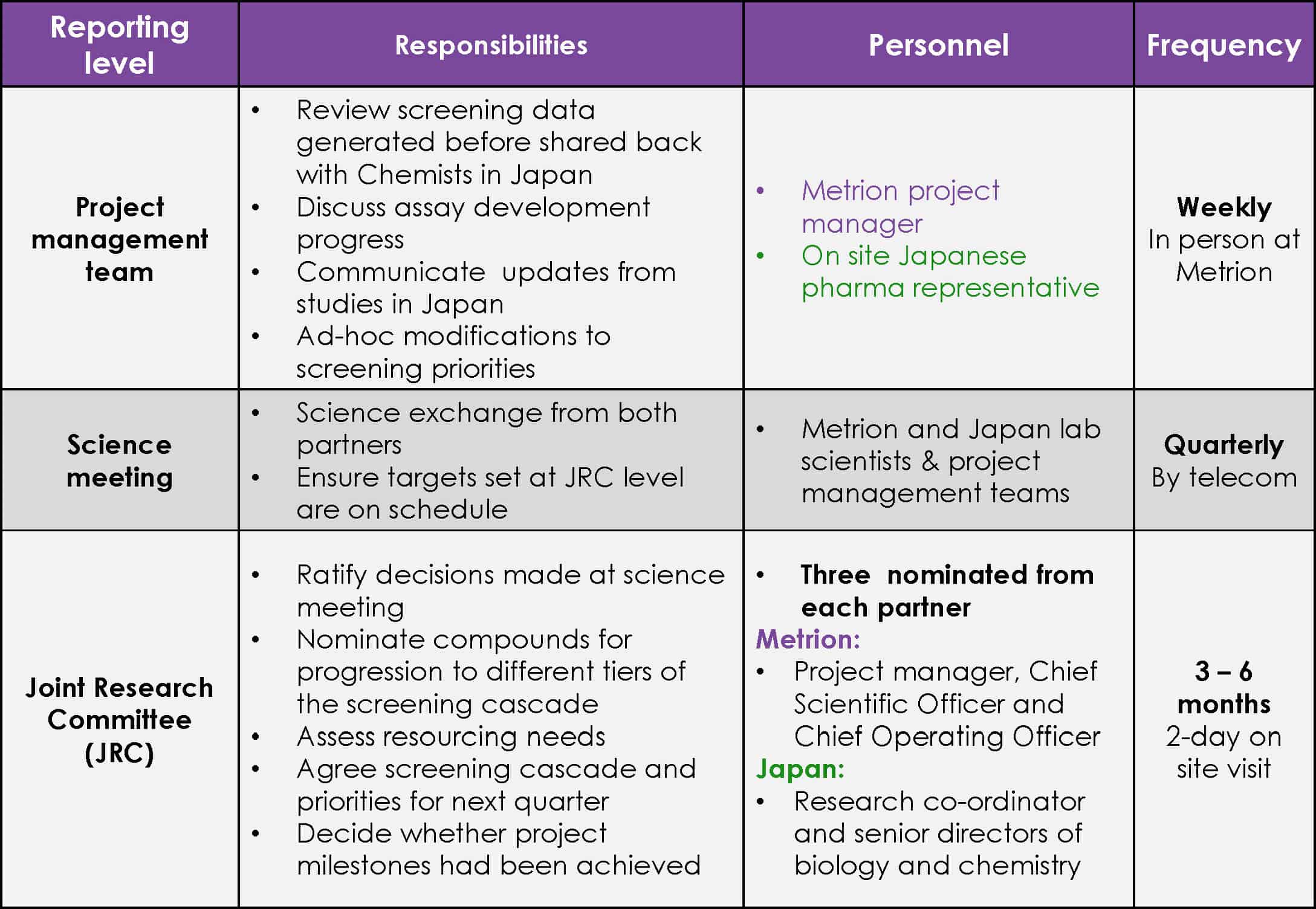
Fast data turn around time
Efficient shipping system and integration into compound management at Metrion ensured rapid data turn around.
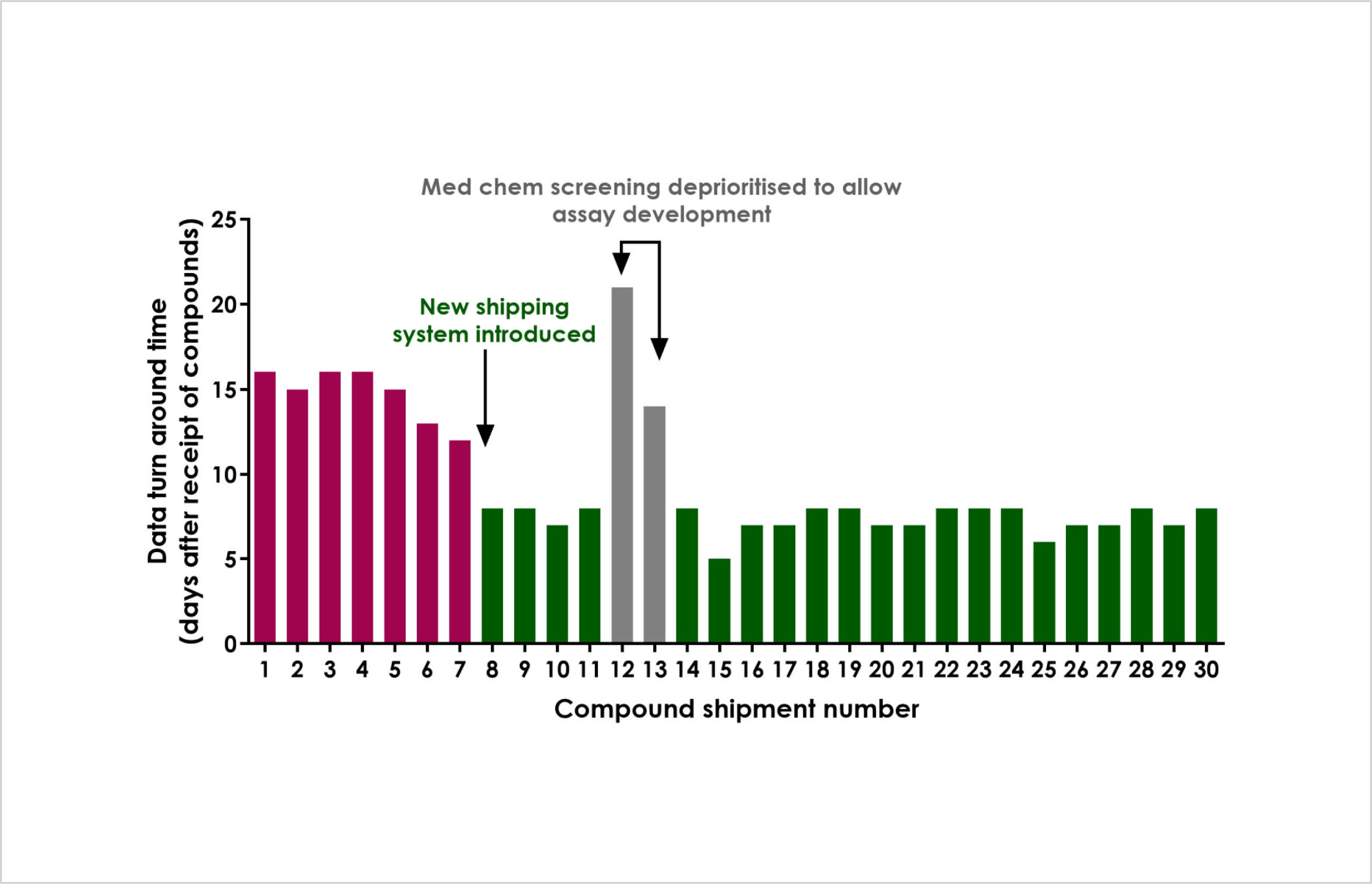
Example data turnaround time for the first 30 weekly shipments received from Japan. Metrion adapted its compound handling process to ensure data was returned in a timely manner to keep pace with SAR in Japan. Data for tier 1 assays was returned to partner within 5 working days of compound receipt from Japan.
Consistent pharmacology
Use of positive control allows QC of assay performance and a benchmark to drive SAR.
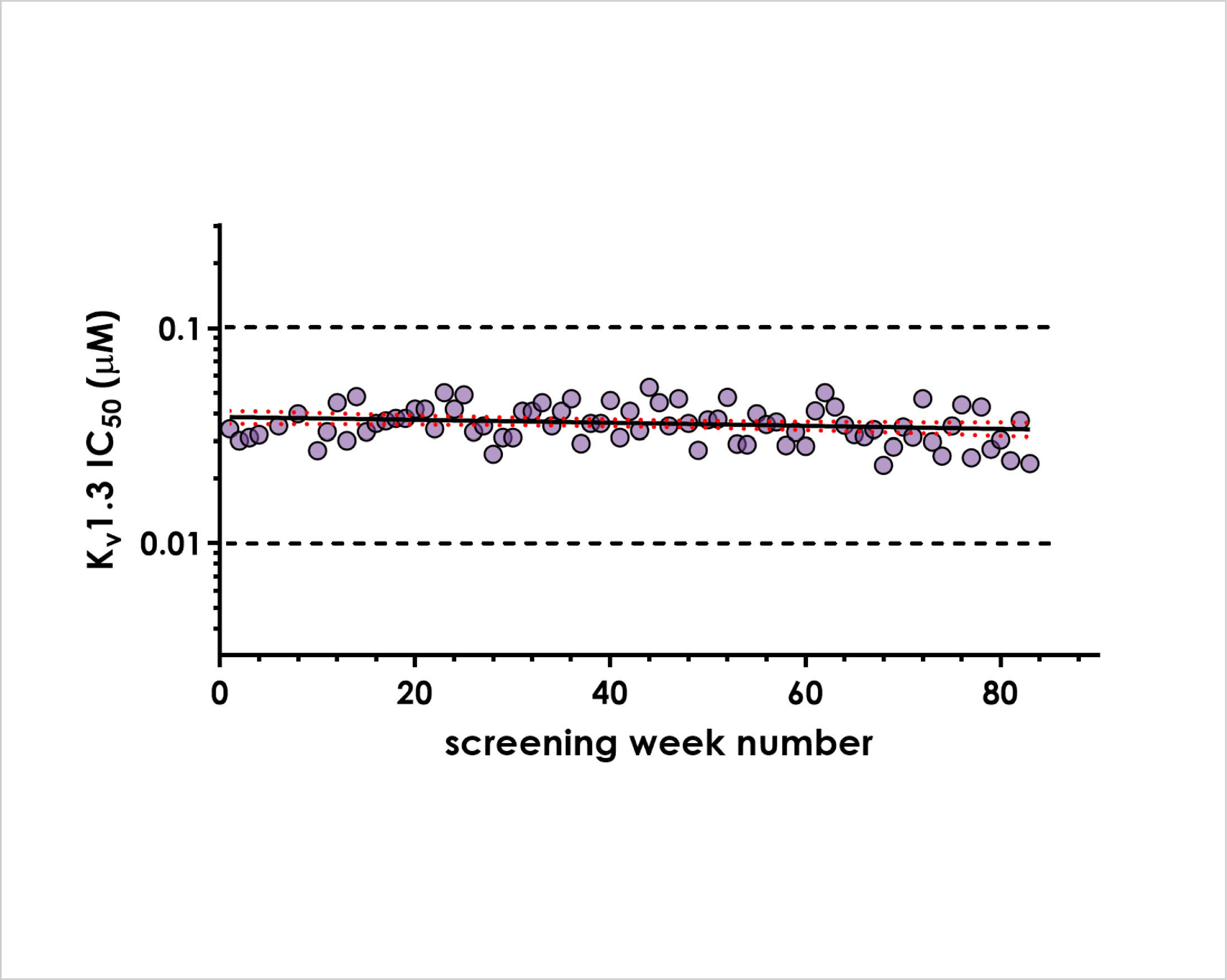
Consistent pharmacology achieved for positive control used in QPatch Kv1.3 assay. Reproducibility well within industry standard (dashed lines show <3-fold variation) with low week to week variation (red dotted line shows 95% CI). Assay was stable so that potency achieved in week 1 for a specific compound would be repeated when tested 80 weeks later.
Using QPatch to drive robust SAR
Using QPatch to drive SAR meeting potency targets.
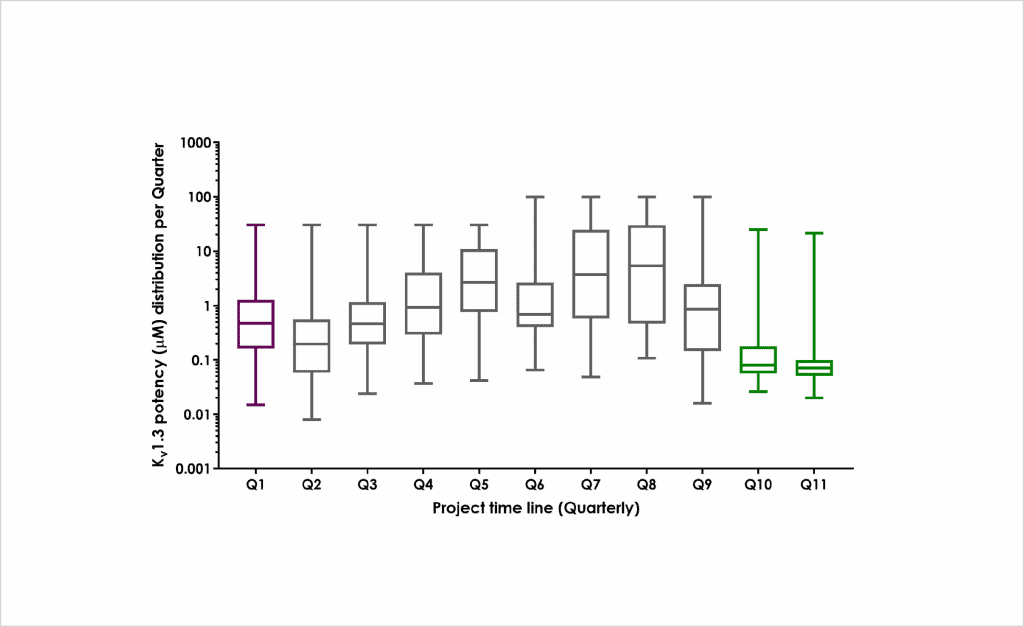
Fast data turnaround times coupled with a robust assay assisted meeting medicinal chemistry targets. Shown is a box whisker distribution plot of potency values for compounds grouped per quarter. Initial SAR assessment (Q1) showed good range in potency, however, optimisation of other properties was required (grey Q2 – Q9) before the target potency (IC50 < 0.1 µM) could be achieved (green – Q10 and Q11).
Metrion’s APC expertise used successfully to support the collaboration at each tier
Establishing Kv1.x gene family counter screens (Tier 2)
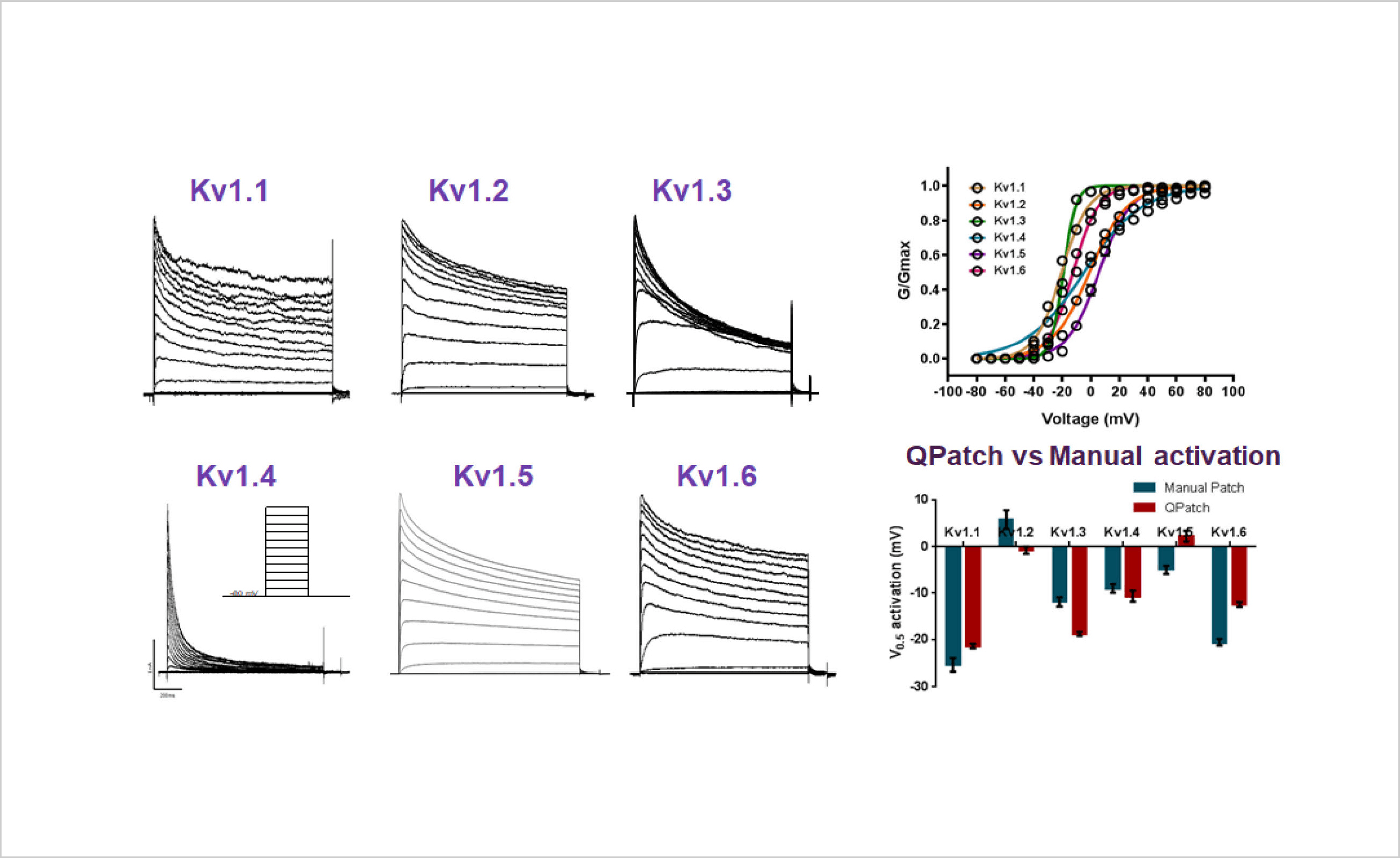
Important that selectivity of compounds was assessed using the same platform to exclude platform bias. Therefore, full biophysical assessment was performed on QPatch before testing compounds.
Rat Kv1.3 cell line required for cascade (Tier 3)
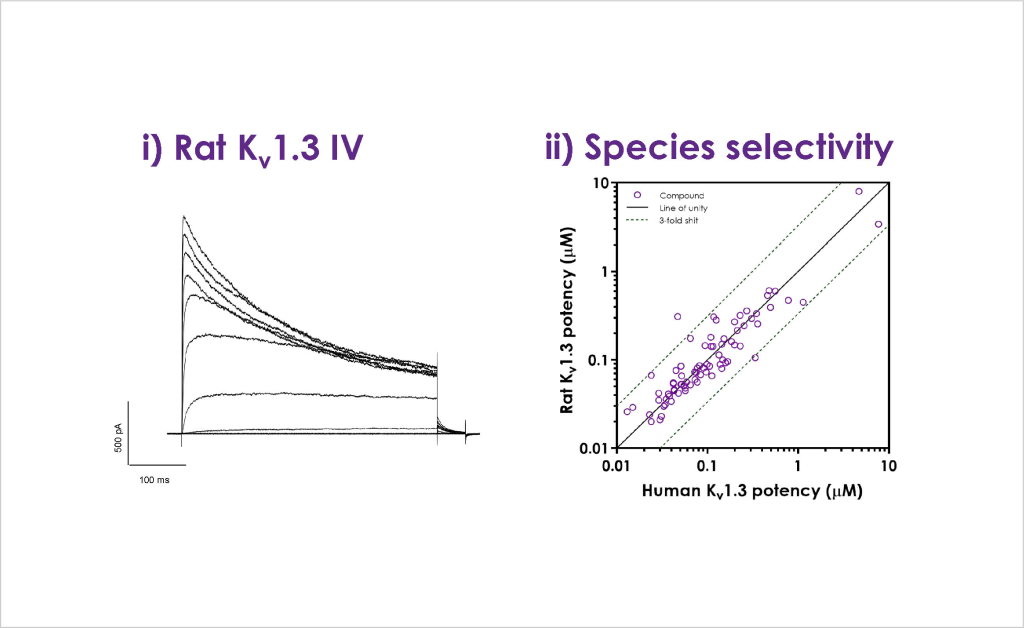
A rat Kv1.3 cell line was generated as rat models were principally used for in vivo testing (tier 3 and 4 of cascade) and due to the lack of commercial supplier.
- Example current voltage (IV) relationship for rKv1.3 cell line.
- Screening of compounds against rat Kv1.3 showed minimal difference due to species (< 3-fold).
Exploring mechanism of action using QPatch (Tier 4)
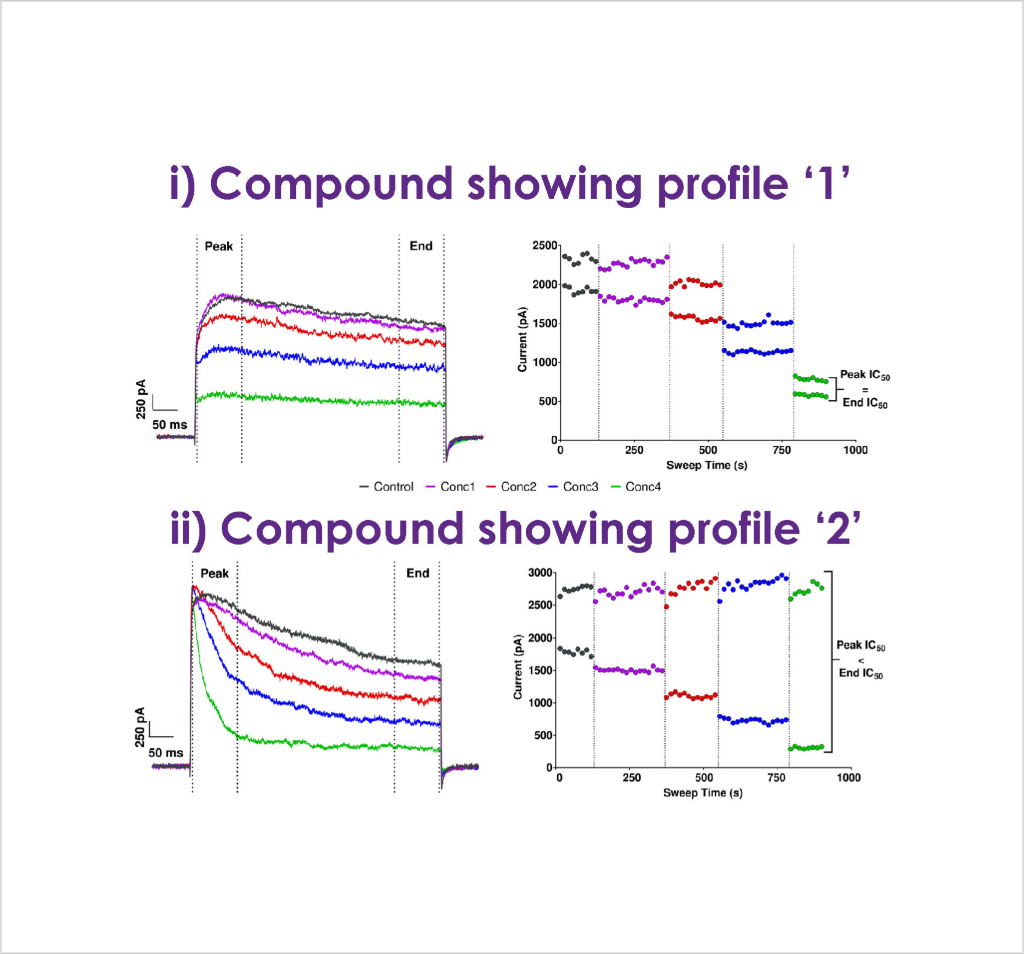
Placing a variety of cursors on current trace provided important information in translation of data from models:
- a compound showing a state independent mechanism of block and
- an example compound showing state dependent block.
Extended cardiac panel testing (Tier 5)
After testing for gene family and species selectivity, we assessed any potential cardiac liability by testing compounds in our panel of human cardiac ion channel assays.
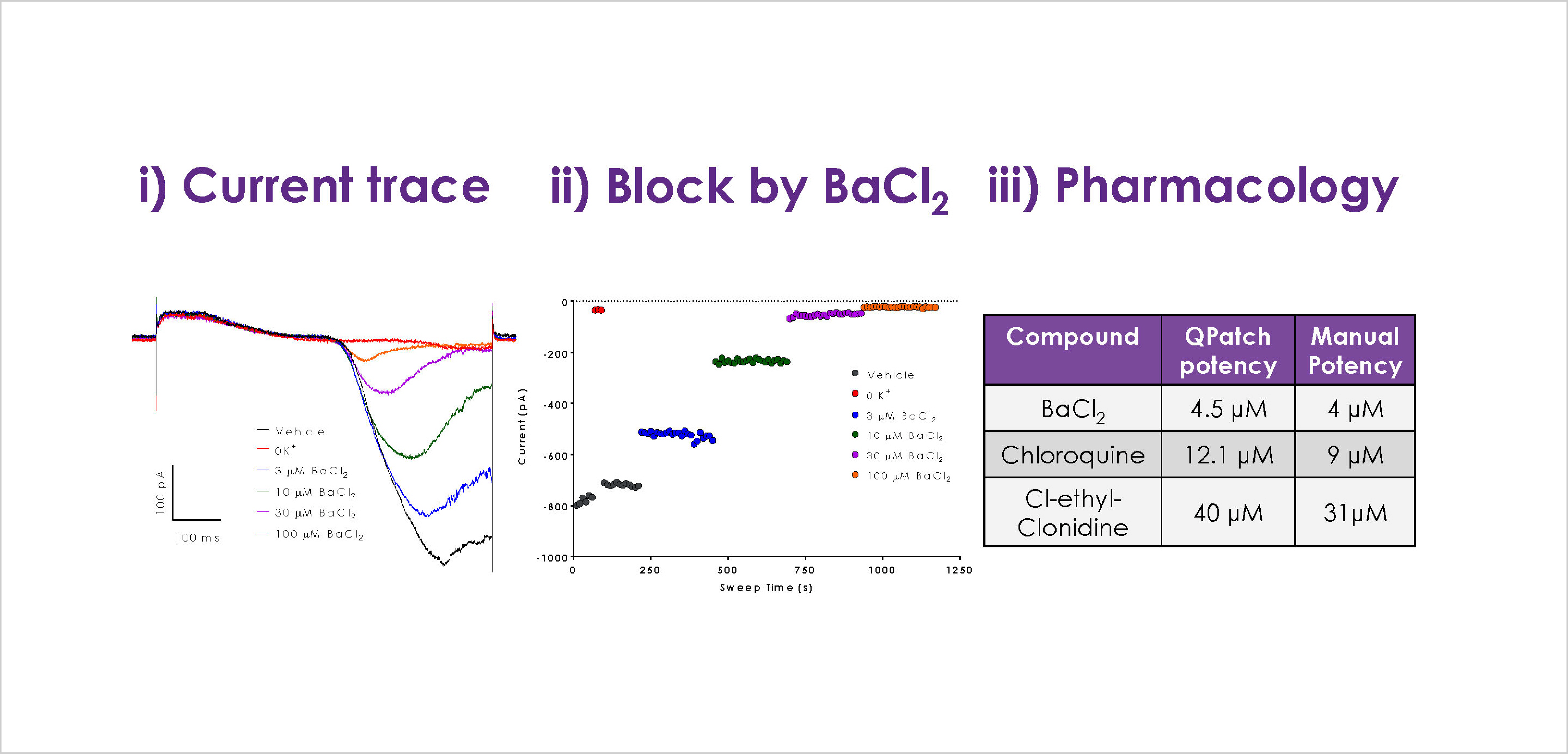
- Example of hKir2.1 current traces
- Concentration and time dependent block by BaCl2
- QPatch assays undergo full pharmacology validation.
Optimised Kv1.3 molecules show nM potency in human T-cells
Potent inhibition of IFNg production from human CD4 effector memory T-cells (TEM).
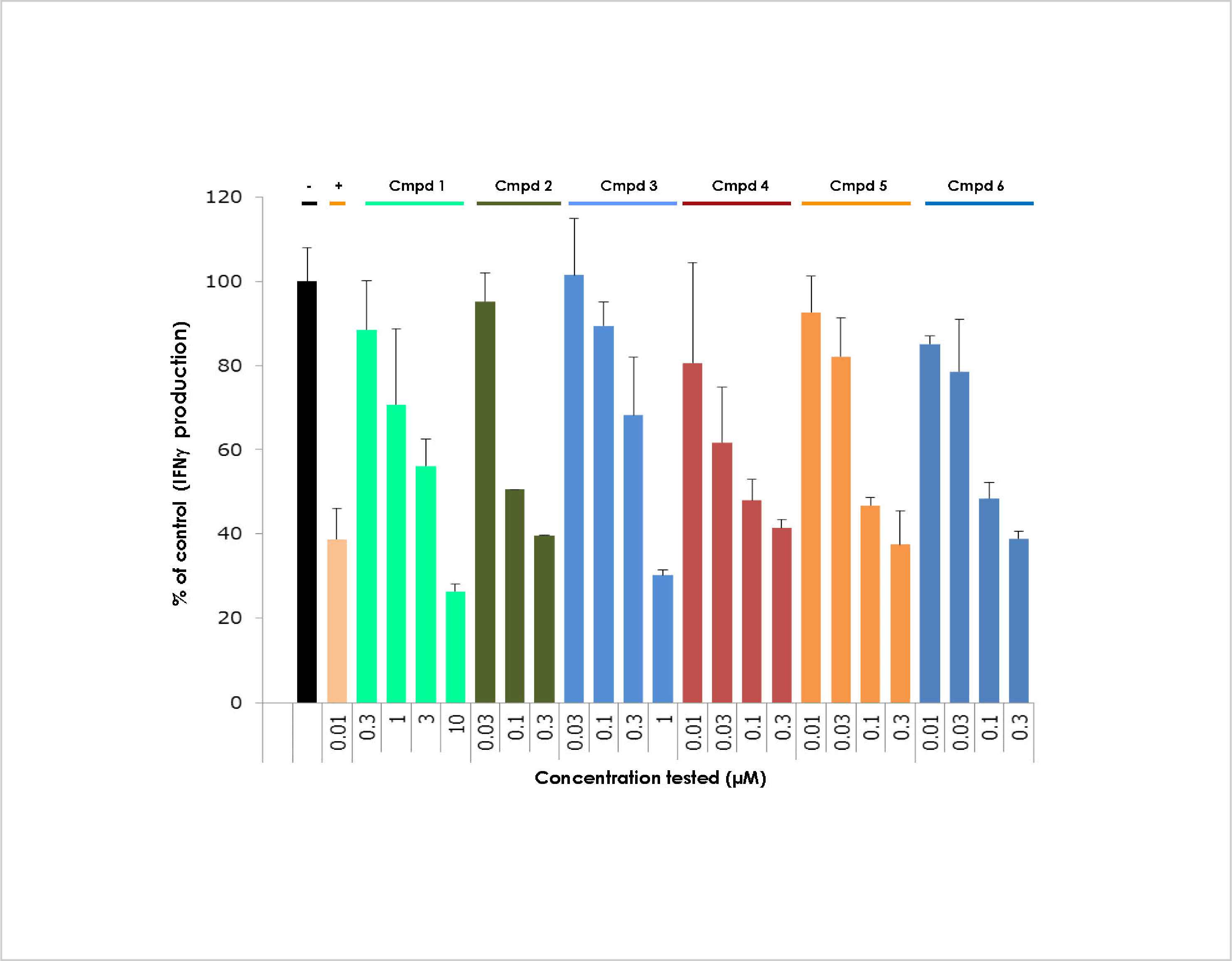
Conclusions
- Metrion’s ion channel expertise combined with the use of automated patch clamp successfully supported a screening cascade over three years that led to identification of potent and selective compounds that demonstrated ex vivo human T-cell and in vivo animal model efficacy.
- A novel outcome of this collaboration was the licencing by Metrion of the Kv1.3 IP from the Japanese partner to further develop into preclinical assets using internal R&D resources and UK SME grant support.

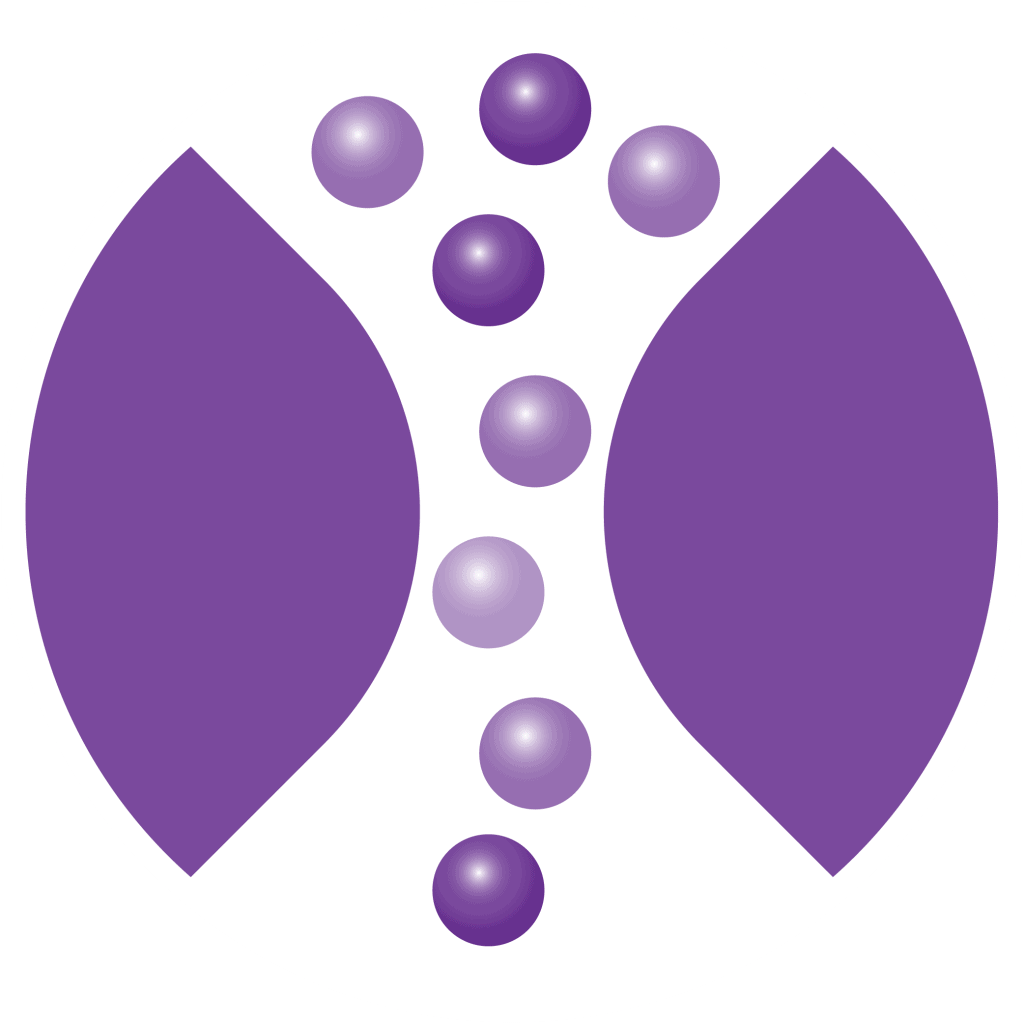
Let’s work together
What are your specific ion channel and assay needs?
If you have any questions or would like to discuss your specific assay requirements, we will put you directly in touch with a member of our scientific team. Contact us today to discover more.
